#Speedtech Performance
Explore tagged Tumblr posts
Text




Ladies and Gentlemen, may we present your 2024 Holley LS Fest East Vintage Class grand champion! Congrats to Nathan Johnson for earning the title, last weekend, in his 1968 Chevrolet Camaro powered by a 422ci CMP Engines LS3 mated to a Bowler Performance Transmissions-prepped Tremec T56 Carbon Edition 6-speed manual transmission and riding on Speedtech Extreme suspension with Extreme Independent rear suspension, Motion Control Suspension coilovers, C6 Corvette Z06 brakes, 315/30R18 Yokohama Advan A052 tires, and 18x12 Forgeline forged three piece GA3R Open Lug wheels finished with Satin Gunmetal centers & Polished outers! Learn more at: https://www.forgeline.com/blog/nathan-johnson-and-stephen-dorrick-win-2024-ls-fest-east-grand-champion-titles-on-forgeline-wheels/31686
#forgeline#forgelinewheels#forgedwheels#customwheels#GA3R#OpenLug#ForgelineGA3Ropenlug#notjustanotherprettywheel#doyourhomework#madeinUSA#Chevrolet#Chevy#Camaro#68Camaro#ChevyPerformance#LSFest#HolleyLSFest#GrandChampion#LSFest2024
21 notes
·
View notes
Text

Speedtech Performance's Evil Oreo 1967 Checy C10
15 notes
·
View notes
Text
bat to the heavens' unintuitive controls end up working in your favor by the end i think. even once you're at speed you don't need to switch to much more complicated inputs; there are still plenty of uses for plain cardinal bat swings, now just working off of more conceptually challenging stage elements. also, making air adjustment into something performed in discrete quanta which needs to be factored into the existing rhythm of your swings for bouncing etc means there's necessarily less of it.
it definitely feels like the difficulty curve is much steeper than e.g. celeste though (as much due to starting from being barely able to get up a step as it is due to ending with speedtech)
0 notes
Photo
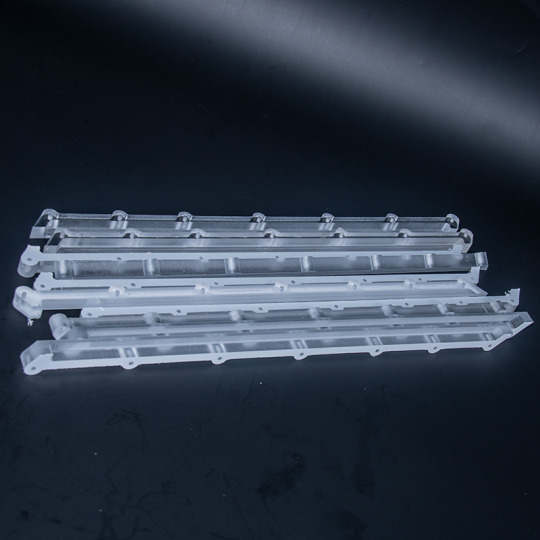
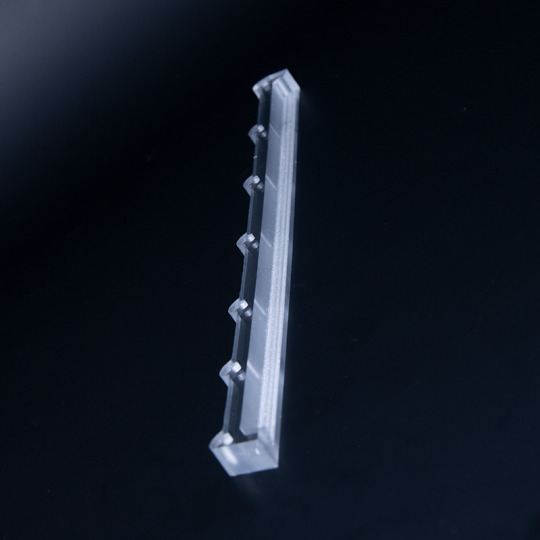
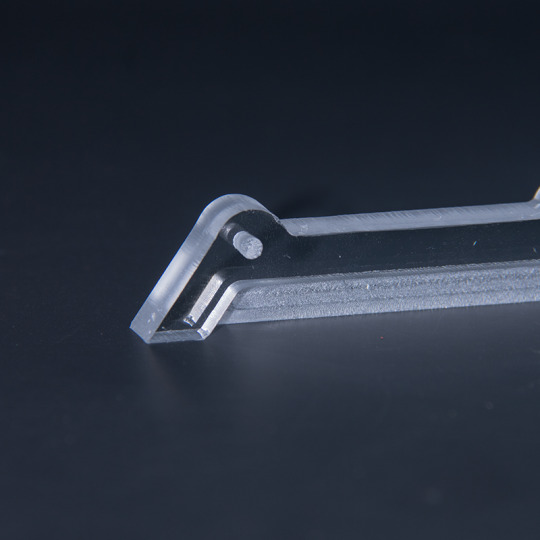
Polycarbonate: Revolutionizing Motorsports Engineering In the high-speed world of racing, every ounce matters. Engineering teams are constantly seeking innovative ways to optimize performance and gain a competitive edge. One material emerging as a game-changer is polycarbonate. Traditionally, race car doors and windows have relied on heavy metal or composite components. But the team at Speedtech Innovations has unveiled the transformative potential of lightweight, durable polycarbonate panels. Polycarbonate's exceptional strength-to-weight ratio is a key advantage. Conventional tracks add significant bulk, compromising a vehicle's agility. In contrast, polycarbonate panels offer comparable rigidity at a fraction of the weight. "Our polycarbonate systems are engineered to withstand immense forces, all while cutting unnecessary mass," explains Lead Innovator Sarah Winters. "This unlocks a new level of performance that traditional materials simply can't match." Beyond strength, polycarbonate excels in versatility and reliability - making it an increasingly attractive choice for eco-conscious motorsports. By embracing this revolutionary technology, teams are driving the future of racing.
0 notes
Text
Enhancing E-commerce Performance: Top Magento Speed Optimization Services in India

Introduction
In the highly competitive world of e-commerce, website speed plays a pivotal role in determining online success. Slow-loading websites can lead to high bounce rates, decreased conversion rates, and dissatisfied customers. To counter these challenges, businesses using Best Magento Team, one of the most popular e-commerce platforms, seek expert speed optimization services. In India, a country known for its thriving IT industry, several companies specialize in enhancing Magento website speed. In this blog, we will explore some of the best Best Magento Development Company in India and understand the benefits they offer to businesses.
Future Profilez Speed Optimizers
Future Profilez SpeedOptimizers is a prominent name in the realm of Magento speed optimization services in India. With a team of highly skilled developers and performance experts, they offer comprehensive solutions to enhance website speed and overall performance. Their approach involves a thorough analysis of the Magento store, identifying potential bottlenecks, and implementing tailored strategies to optimize loading times. Future profilez Speed Optimizers also provide caching solutions, image optimization techniques, and server-side optimizations to ensure seamless user experiences.
BestMagentoTeamTech Solutions
BestMagentoTeam Tech Solutions has earned a stellar reputation for delivering top-notch Magento speed optimization services. Their team combines technical expertise with an in-depth understanding of e-commerce requirements, resulting in significant improvements in website speed and performance. They leverage advanced tools and techniques to minimize page load times, optimize database queries, and reduce server response times. By partnering with ABC Tech Solutions, businesses can unlock the true potential of their Magento stores and boost user engagement.
It offshore solutions Performance Experts
It offshore solutions Performance Experts boasts a team of seasoned professionals who specialize in Magento Development Company India. With a client-centric approach, they offer tailor-made solutions to meet the unique needs of each e-commerce store. Its offshore solutions Performance Experts conduct a comprehensive performance audit to pinpoint speed-related issues and subsequently implement various optimization strategies. From code-level optimizations to content delivery network (CDN) integration, they ensure that the Magento store performs at its peak capacity.
SpeedTech Masters
SpeedTech Masters is another leading player in the Magento speed optimization domain in India. Their team of dedicated experts is committed to accelerating the performance of e-commerce websites, resulting in improved search engine rankings and higher customer retention rates. SpeedTech Masters employs advanced techniques like GZIP compression, browser caching, and script minification to reduce page load times drastically. Their proactive monitoring and maintenance approach ensure that the website continues to perform optimally even after the optimization process is complete.
MagentoSpeedPro
MagentoSpeedPro is a trusted name when it comes to optimizing Magento Web Development India businesses. Their specialized services encompass a wide range of optimizations, including server configuration, code optimizations, and image compression. They also offer effective solutions for handling traffic spikes during high-demand periods. With MagentoSpeedPro's expertise, e-commerce businesses can provide seamless shopping experiences, leading to higher customer satisfaction and increased sales.
Benefits of Magento Speed Optimization Services
Enhanced User Experience: A faster website translates into improved user experiences, reducing bounce rates and increasing user engagement. Customers are more likely to explore and make purchases on a website that loads quickly and smoothly.
Improved Search Engine Rankings: Search engines like Google consider website speed as a ranking factor. Faster-loading websites are more likely to rank higher in search results, driving organic traffic and increasing visibility.
Increased Conversion Rates: A speedy website leads to higher conversion rates, as customers are more likely to complete their purchases without encountering frustrating delays.
Mobile Responsiveness: With a significant portion of e-commerce traffic coming from mobile devices, optimizing Magento websites for speed ensures a seamless experience for mobile users, further enhancing customer satisfaction.
Conclusion
In the digital age, optimizing website speed is paramount for e-commerce success. Businesses in India utilizing Magento for their online stores can benefit greatly from expert speed optimization services. By leveraging their expertise, businesses can unlock the full potential of their Magento stores, delivering exceptional user experiences and driving higher conversion rates. In the fiercely competitive e-commerce landscape, investing in Magento speed optimization services is a strategic move to stand out from the crowd and achieve sustainable growth.
#BestMagentoTeam#MagentoDevelopmentServicesIndia#MagentoWebDevelopmentCompanyIndia#MagentoWebDevelopmentIndia#MagentoDevelopmentCompanyIndia#MagentoDevelopmentAgencyIndia#BestMagentoDevelopmentCompanyinIndia
0 notes
Photo
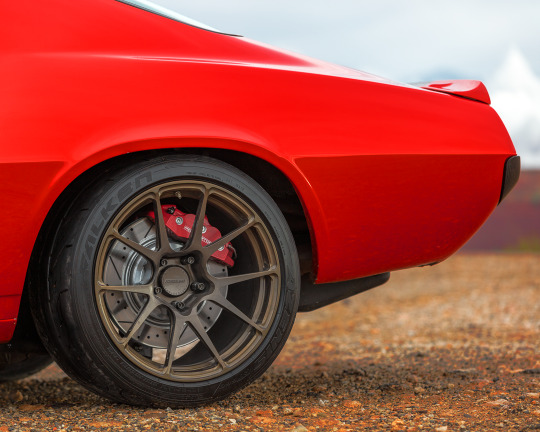
Gen 2 Camaro looking great on a rainy day.
3 notes
·
View notes
Text
C8 Corvette Ride Along with Ashley Duran
C8 Corvette Ride Along with Ashley Duran
Model Ashley Duran joined GearHeadTour while we were in Las Vegas, and we went for a quick drive in a red 2020 C8 Corvette 3LT Z51 down the strip and past the casinos. This was just one day before Ashley took the hosting duties at our visit to Speedtech Performance in Saint George, Utah. You can see that video at the link below. In her first video for GearHeadTour, Ashley took a tour of the…
youtube
View On WordPress
#2020 c8 corvette#c8 corvette#camaro#corvette#dodge charger#gear head tour#GHT Media#speedtech#speedtech performance#video#YouTube
0 notes
Photo

Speedtech Road Assault package on a '68 Chevelle. More adjustability, better handling geometry, more spring rate and lighter weight all contribute to a dramatic increase in handling and response. Available for GM Muscle cars 👉 give us a call for best pricing from @protouringtexas 💯 ______________________________________________________________________________________________________ #protouringtexas #speedtech #speedtechperformance #performance #protouring #pro-touring #gmachine #g-machine #lateral-g #lateralg #lateral g #autocross #autox #auto cross #roadcourse #roadrace #usca #optima #musclecar #muscle_car #dragrace #suspension (at Protouringtexas.com)
#musclecar#speedtech#lateral#protouring#performance#roadcourse#lateralg#dragrace#protouringtexas#autocross#pro#muscle_car#g#auto#gmachine#usca#optima#speedtechperformance#roadrace#autox#suspension
8 notes
·
View notes
Text

At the Holley Moparty
Speedtech Performance RedEye powered
'70 AAR 'cuda
20 notes
·
View notes
Photo

1969 Pontiac GTO with supercharged 416ci LS3 by Speedtech Performance. Speedtech Extreme chassis, Rossler 4L80E 4spd auto trans, Ford 9in rear-end with Truetrac diff. 860hp @ 12psi. [ https://i.imgur.com/KhXXyCQ.jpg ]
#AwesomeCarMods#Awesome CarMods#Awesome Car Mods#car mods#1969 Pontiac GTO with supercharged 416ci L
11 notes
·
View notes
Text
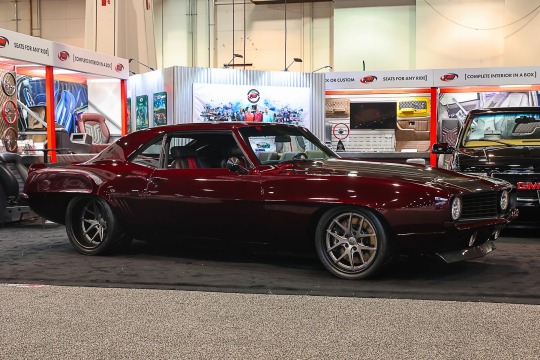
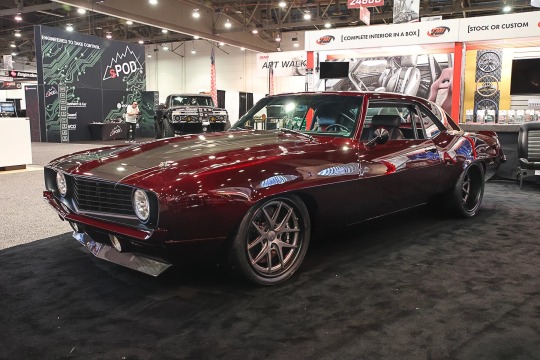
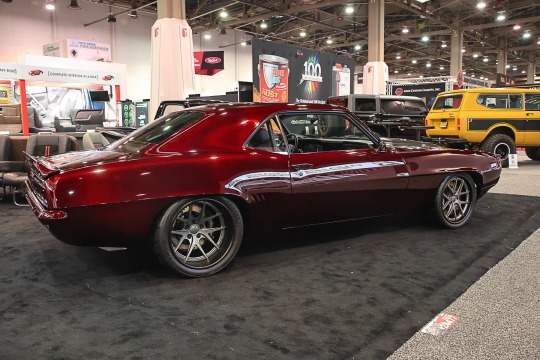

Delicious. Finale Speed’s candy red production-ready carbon-bodied 1969 Chevrolet Camaro debuted in the TMI Products booth, at the 2023 SEMA Show. It’s powered by a 650HP Chevrolet Performance supercharged LT4 mated to a Tremec T-56 Super Magnum 6-speed manual transmission and rides on a Speedtech Performance ExtReme chassis, JRi Shocks coilovers, Wilwood disc brakes, Toyo Proxes R888R tires, and 18×10.5/18×12 Forgeline forged three piece VX3C wheels finished with Gunmetal centers & Matte Black outers! See more at: https://forgeline.com/customer-gallery/finale-speed-2
🇺🇸🇺🇸🇺🇸
#forgeline#forgelinewheels#forgedwheels#customwheels#VX3C#ForgelineVX3C#notjustanotherprettywheel#doyourhomework#madeinUSA#FinaleSpeed#Chevrolet#Chevy#Camaro#69Camaro#carbonfiber#protouring#SEMAShow#SEMA2023
65 notes
·
View notes
Text
My guess is that since speedtech is still relatively new for a lot of ppl, they find those things engaging. Like, notice the difference between how dream blocks specifically were handled in SJ and SC. A lot of the SC dream block maps came down to dreamhyper spam. No dreamsuper, dhyper redirects, none of that shit. Just plain dhypers. And I remember there being, like, two or three maps that were just that. Meanwhile, in SJ. dhypers aren't treated as novel or difficult enough to be an entire map.
I think tech execution maps are universally enjoyed in the community specifically because it's not hard to make a decent tech execution map, but making a bad puzzle map is very possible. So, you can get this loop of going "well, I don't like puzzle maps, there are no good maps" therefore "I don't like this map because it's a puzzle map." I got that way about jelly maps where I just got thrown in the deep end and was like "fuck I hate this." The community also has a stick up its ass about stuff like cycle maps, which I think it's starting to chill out about. Cycles are another category of map that's hard to make work.
And there are a ton of mechanics that the community just avoids working with because it's hard to get right and therefore unfun. Stuff like Badeline Boss (despite literally being on of the best boss fights in a video game), Feather, Wind, Snowballs, Seekers (Temple Monsters), Core Dash, etc. It's just a ton of unused design space.
Then there's advise that's a good rule of thumb but gets taken too strictly. Stuff like indicators and sight readability are generally a good thing. It fucking sucks banging your head against a wall only to realize the intended solution was just not something you would've thought of, especially in a precision platformer. But at the same time, indicators are horribly misused in SJ. Thinking with Portals is the worst offender for this because the map doesnt feel like it was designed with indicators like that in mind, which sort of ruins the "thinking" part of the map. Indicators are meant to be hints, not solutions, which I think a ton of SJ's maps miss. When I think of indicators, I think of stuff like camera offset triggers and touch switches. Not decals saying when to release the jelly or whether you should dream jump. I think the only map where I liked this style of indication was in Square the Circle where the map felt like an introduction to the concept of mechanics interacting in weird and unintuitive ways.
Also, I want to point out that some of the most beloved maps in the community contain, at least, light puzzle elements. Glyph is the biggest example. But in general, light puzzle elements is a good way to break up gameplay and make maps feel more unique. And "light puzzle elements" could mean anything. I personally like making GM+ maps that interpret the concept as a "do you understand the fundamentals of why tech works to figure out what batshit tech I'm trying to set up?" Stuff like doing a bird ultra into a corner jump, realizing that you can get a boost from those grab trigger temple gates if you superdash into them while upside down, or realizing that with the superdash variant enabled you can perform the set-up for an ultra to increase your dash length while still steering it to reach places that you otherwise wouldn't be able to. That type of stuff is just based on what I personally find appealing tho. There are a ton of other approaches to puzzle elements. Just make something based on what elements in Celeste you enjoyed thinking about then trust the player a little to actually solve the puzzle.
Another thing I think is important to mention, the mentality behind playtesting in Celeste's community is not helpful for this issue. I think in order to see proper results for playtesting something with even minor puzzle elements, you have to see the playtesting VODs. You have to take note of what the playtester's initial approach to each screen was. How long did it take for them to realize they're doing it wrong? Were they able to brute force it? Instead, the standard method for playtesting in Celeste's community is basically to write everything in a Google Docs. SJ also had the specific thing where playtesters could opt out of playtesting puzzle maps, which I think was a mistake. The term "puzzle map" isn't a complete categorization. I personally think Dropzle is the only puzzle map in SJ, Gift from the Stars was more of psuedo-puzzle map because while it definitely prioritized puzzle solving over platforming, it still had elements of platforming in there. Then ask where the line between puzzle and not-puzzle is. Like, is Glyph a puzzle map? I don't think anyone would deny the puzzle elements, but I think, at least, a noninsignificant number of people would say that it isn't a puzzle map. I personally chose to opt out of puzzle maps because my response to puzzles is brute force. Like, if I playtested Dropzle, I literally would have nothing of value to say (that's constructive anyway) because I solved half the rooms through trial and error and the other half by making the pixel perfect jump. But it also means that playtesters who opted not to playtest puzzle maps likely saw light puzzles in the maps that they did playtest and were turned off by it, which could have contributed to the decreased value of puzzles. I also cannot speak to other ppl's experiences, but it felt like the maps I was being asked to playtest, difficulty wise, were right above my comfort range. If that holds true for other playtesters, it's possible that contributed to the conceptual difficulty being nerfed, since the mechanical difficulty was too high and unquestioned. This is more an issue with how SJ specifically was organized. I think in the future, playtesters should've been given a mix of maps on the edge of their comfort zone, around that level, and a bit below. Like, I think I'd have been able to provide useful feedback for Intermediate and Advanced maps (all of my playtesting was yellow - red expert).
I also want to quickly defend the tech-based difficulty system currently in place. From the perspective of organizing a large collab like SC and SJ, which are the two main instances of this system, this system does a lot to help manage the difficulty curve of these collabs in spite of them having dozens to hundreds of contributors. While I agree that outside of Beginner to Intermediate (where the difference is no tech to yes tech), tech is not a solid system of judging a map's difficulty. Especially starting in Advanced lobby, you can very clearly see maps that are by all means a map of a previous difficulty but with a minor amount of tech outside of that lobby. Probably the two biggest offenders are Lethal Laser Laboratory (Adv) and Hypnagogia (Exp) which both felt like Intermediate maps but with Adv/Exp tech thrown in. But the reason why this system is good for managing the difficulty curve is that it creates a pretty clean pattern where the player can learn tech in the gym as an intermission without overloading themselves within that gym. Which I think can be seen with how tech placements were altered between SC and SJ. In SJ, for example, Corner Jumps, and Puffer Boosts got moved down while stuff like Theovater got moved up. Personally, I think in terms of tech execution small Chained Ultras and Demohypers could easily go into Expert without causing any issues, but that's neither here nor there. The advantage of this system is that it prevents the tutorials in the collab from being overwhelming and helps manage the difficulty curve because it standardizes the tech used per lobby. I think tech execution is also just the only objectively measurable factor to a level's difficulty, which is why it's so heavily leaned on in large collabs. Smaller projects shouldn't feel constrained to these collab's definitions or difficulty ratings tho. Like, take base game, for example, where would you categorize 7C and 9a? Or what about Monika's D sides? I personally would stick them both as Red Intermediate, but a lot of people argue that they'd count as Green-Yellow Adv. My point is that these levels don't conform to the modding community's understanding of difficulty because they're not based around SC's and SJ's models. Also, I think a major reason these models exist is because Celeste mods are almost entirely stuff that's harder than base game, even amongst people who don't make mods because they thought base game was too easy. I think part of that's because base game gives the player a flavor of speedtech at its highest levels, so the common entry point into modding is players who are able to wallbounce and wavedash. So, really the difficulty schemes represent something to lines of Beginner, for players who beat the main story but didn't do much else; Intermediate, for players who beat something from 7b to 9a and are looking for easier spectrum gameplay; Advanced, for players who have beaten 9a and are looking for harder gameplay; Expert, for players who are comfortable in the modding scene and may still desire challeng; Grandmaster, for players who want to be eviscerated. At least, that's my interpretation of the categorizations. But different people are going to have different takes on it.
Another thing I want to point out for SJ specifically. The cracked difficulty meter really should've been implemented into every lobby. I think SC got away with it only being in GM, but SJ had so many maps that were just cracked difficulty for their lobbies. Gift from the Stars is a cracked beginner map, Deep Blue was a cracked intermediate map, The Tower XVI was a cracked advanced map, Psychokinetic was a cracked expert map. They're all maps where their difficulties somewhat overlap with the next lobbies. And they're all maps where their difficulty goes beyond their tech grades. Gift requires the player to be super intentional with their dash, which is a characteristic that I think starts to become relevant starting Intermediate; Deep Blue requires the player to manage a lot of things at once rather quickly thanks to the jellies and zip movers; the Tower XVI required a lot of finnicky precision to its movements on top of being very puzzle leaning; and Psychokinetic has a ridiculous input density that's not normal for Expert. I think listing these and maybe a few others depending on the lobby as being cracked would've helped since it would've indicated that these maps are really difficult but in a way that makes them more than just their tech grade.
As a whole, difficulty is hard to properly judge. So, I think the tech-based model is effective for large projects like SC and SJ specifically because it standardizes things a little bit for each lobby. But it's not a fullproof model and it absolutely isn't applicable to smaller projects. I'm not sure if the complaints about tech to difficulty are directed at SJ or just Celeste mods in general. I haven't really been keeping up with smaller projects recently. But I'd generally recommend people mapping to consider tech as more of a rough guideline to what type of player your map is going to court rather than a definition towards a map's difficulty. That's probably a better usage of these metrics.
What really burns my ass about the Celeste modding community being obsessed with execution of janky glitch tech as the sole legitimate measure of difficulty and concomitantly having zero respect for puzzles is that the Super Mario romhacking community is turning out these amazing puzzle levels that are being played competitively at GDQ events and such, in spite of the fact that Super Mario isn't even a puzzle-centric game, while Celeste, which very much is a puzzle-centric game, is basically entirely absent from that scene.
1K notes
·
View notes
Video
youtube
Liked on YouTube: Behind Garage Doors- Speedtech Performance https://www.youtube.com/watch?v=fUnIvQOa4Uk
0 notes
Photo

Speedtech Performance Builds Slick, Super Modern 1954 Ford F-100. Lets like👍 and share this post to show the builder some love on this wicked build. 👨🔧 #ford #newtonfordsouth #charlesatnewtonford #speedtechperformance #custombuild #f100 #fordracing https://bit.ly/3hYYR7K
1 note
·
View note
Photo
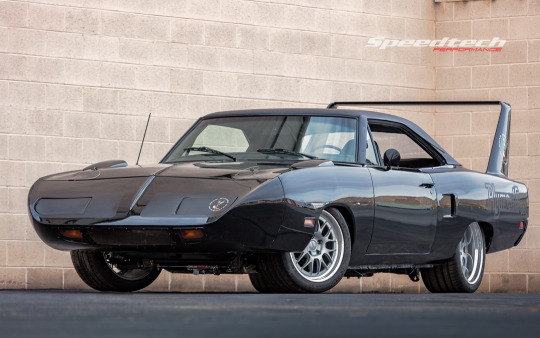
Yes!
2 notes
·
View notes
Text
Building this 1979 Pontiac Firebird was a Form of Therapy for a Veteran
Stories don’t always begin with the featured vehicle. This 1979 Pontiac Firebird actually began with a 1967 Chevy pickup. I photographed that C10 for sister publication Classic Trucks. It was exceptional beyond the sum of its parts: Tony Scalicci transformed it from hardly more than a frame and bits of a rusty cab into a top-shelf Pro Touring rig that made the cover of a national magazine. And he did it in like a year. But that’s not even the impressive part: it was his first shot at building anything. This is a busy dude with a big family and a serious job.
This article was originally featured on HOT ROD. For more stories like this, check out the HOT ROD Network.
When pressed for the secret to success he revealed something that most wouldn’t associate as any sort of benefit to car building: Post-Traumatic Stress Disorder. Tony is one of the near-countless veterans affected by their service. PTSD manifests in just as many ways. “Specifically, I over-think,” Tony explains. “I can’t turn my brain off. When I don’t have anything to do—meaning I don’t have something to focus on—I get overwhelmed with thoughts that I shouldn’t be having.” Building things trains his mind on something more positive. “I use that therapy to go to the next car.”
This is that next car. In fact, there have been so many next cars that Tony went into business building cars for others at G Rods Garage in Chehalis, Washington. But while building that truck, Tony discovered something that changed his life: Autocross. Specifically, the Optima Ultimate Street Car Challenge. As he quickly learned, the truck he built had more of the appearance of a racecar than the performance of one. To remedy that, he had to start from scratch.
His inspiration for it was as unlikely as the backbone of his productivity. “My grandmother bought a brand-new Trans-Am in 1979,” he reminisces. “At Optima you want to show up with something that’s different from everything else. I’d never seen a Trans-Am.” After some searching, Tony found a derelict project. “The guy blew it into a million pieces and gave up,” he says. The car came together around Speedtech Performance’s successful Track Time suspension, a system that uses the company’s interpretation of the torque-arm that helped make the third-gen F-body so successful.
For power, Tony had Tory Eaton build an LSA with a raft of parts from Lingenfelter Performance Engineering: a ported 1.9 Eaton supercharger, ported heads, and a Brian Tooley Racing cam. Eric Armstrong at Armstrong’s Automotive and Performance Center in Enumclaw coaxed 722 hp and 640 lb-ft torque from the healthy combination. What that engine drives is unexpected: a Tremec TR6060. It’s basically the venerable T56 with a host of improvements like triple-synchronized first and second gears and double-synchronization on all others including reverse. A one-piece countershaft also gives the trans a 600 lb-ft torque capacity. However, the gearbox presented a few problems. Because GM intended it for the IRS-equipped Camaro, it has an output coupling that requires a slip-yoke driveshaft. The transmission is also much bigger. “You have to raise the floor to fit the trans,” he says. “It’s bigger back there.”
Tony modified the body in ways that escape notice but make the car function better. Naturally, he tubbed the rear but to get 335/30ZR18s to tuck, but he also had to slice the rear quarter panels lengthwise over the wheels and fill the gap that emerged. “Everybody thought it was awesome, but it was the easiest thing you can do,” he assures. To get 315s on the front, he pulled out the leading lower edges of the fenders out. That widened the nose at the bottom, so he cut up two bumper fascia on either side of the center and grafted them together with a scarf joint and urethane adhesive. Tony worked with Boze Alloys to create this design that borrows everything from the snowflake…except the weight. They measure 18×9 and 18×10 and mount 315/35R18 and 335/30R18 BF Goodrich g-Force Rivals
The feature that makes the car distinctive—the T-tops—also made it a lot harder to build for track use, because they compromise the structural integrity of the body. To combat the potential chassis flex, built an eight-point rollcage from .095-inch wall-thickness tube. He used 1 3/4-inch tubing for everything right up to the tops of the A-pillars and sail panels. From there he spanned the top with 1 ¼-inch tubing. “I would’ve gone thinner-wall, but I couldn’t find chromoly in the diameters that I wanted,” he says. What’s especially noteworthy is how Tony routed the tubing. He removed the inner roof panels, tucked the tubes into it, modified the inner panels to fit, then welded everything back together. The only evidence is a bulge in the inner A-pillars.
Though effective, the design has secondary consequences. Because he had to snake the tube across the roof to go through the T-top spine, there’s a lot of material in there. And because he had to run heavier-wall tube to get the sizes he needed, that extra material is kind of heavy. Adding to that weight is the full interior that Tony Miller at Stitches Custom Upholstery created. In total, the car is 400 pounds heavier than the class minimum.
“It was crazy just how much it hurt lap times,” Tony admits. “I really thought horsepower would overcome the weight.” He cites a buddy who turns faster lap times despite reduced power. “It’s lighter—he was below the 3,200-pound weight minimum whereas I was 3,525.” Furthermore, his friend had the advantage of ballast. “He put the weight where it did the most good.”
Though heavy, his 1979 Pontiac Firebird performed beyond expectations. “I can’t remember how we placed in the first race (in Las Vegas), but in the last race, I finished in the top-five.” The race between those will go down in infamy; at the Fontana meet, an aggressive speed bump bent an exhaust outlet upward, directing hot gases at the urethane bumper which ultimately caught fire. “By the time I noticed it, I’d done two laps,” he says, laughing. “I walked away pretty cool about it, but the photos quickly became memes.” He had the car not just track-ready but repainted within 14 days.
Tony once again found himself in a similar predicament as he encountered with his pickup: he learned a bunch more that he couldn’t address without basically starting from scratch. “If I could’ve thrown carbon doors at it, I think I could’ve consistently been in the top three with it,” he speculates. “But at $2,500 to $3,000 a door, it just wasn’t worth it.”
Obviously, the story about this car didn’t start with this car, and it doesn’t end with it, either. Tony recently bought a third-gen Camaro. “It’s crazy how much lighter it is,” he marvels. With LS power but otherwise stock with a full interior and half a tank of gas it weighs 3,030 pounds, well below the 3,200-pound threshold giving him plenty of ballast potential. And with a Lingenfelter LS7, a sequential Tremec, Heidt’s front clip and IRS, plus Tony’s creative gumption, it can’t help but run hard.
“When I built this car I looked at things differently,” Tony says. “I thought, ‘Well this is what the rules say’, but there’s a gray area – a huge gray area. A lot of the guys I run with, have been doing this for four or five years. They’re really good at that gray area.”
The post Building this 1979 Pontiac Firebird was a Form of Therapy for a Veteran appeared first on MotorTrend.
https://www.motortrend.com/news/1979-pontiac-firebird-custom-car-by-veteran/ visto antes em https://www.motortrend.com
0 notes